Types of Appliances
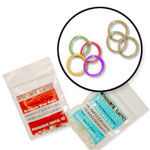
Elastics (Rubber Bands)
Wearing elastics (or rubber bands) improves the fit of your upper and lower teeth. Wear rubber bands as instructed and remember that the rubber bands work far more efficiently if they're worn as prescribed.
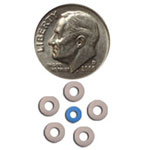
Separators or Spacers
Separators are little rubber doughnuts that may be placed between your teeth to push them apart so that orthodontic bands may be placed during your next appointment. The separators will be removed before we place the bands. Separators do not mix well with sticky foods, toothpicks, or floss.
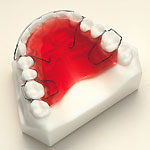
Retainers
Retainers may be removable or fixed. They hold your teeth in their new, correct positions after your teeth have been straightened. Your orthodontist will instruct you on how to care for your retainer and about the duration of the wear. Wearing your retainer as directed is crucial to prevent regression of your treatment.
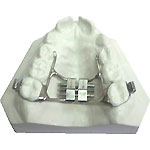
Rapid Palatal Expander (RPE)
This is a common appliance used for patients who have a posterior crossbite. It is cemented on the upper teeth. There is a screw in the center that the patient turns to slowly widen the appliance. As the appliance widens, the crossbite is corrected. Patients will usually crank the appliance for two to four weeks, but it must remain in the mouth for six to nine months. Braces are often put on during this time.

Pendulum
This is a fixed (cemented) appliance used on the upper teeth. It is prescribed in patients who have an overbite (Class II) and a balanced facial profile. It is designed to move the upper molar teeth backwards into the correct Class I position. It is worn for nine months and is typically used in conjunction with braces.
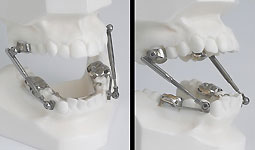
Herbst Appliance
This appliance is designed to promote forward growth of the lower jaw. It is prescribed in growing patients who have a significant overbite (Class II) and a recessive lower jaw. It is a fixed (cemented) appliance with both upper and lower parts connected by a forward positioning arm. It is typically worn for nine months during which time the lower jaw is held forward. While held in this forward position growth is encouraged at the condyle of the lower jaw (where the jaw connects to the skull), so that when the appliance is removed the overbite is corrected. It is often used in conjunction with braces.
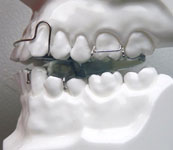
Twin Block Appliance
This is another appliance designed to promote forward growth of the lower jaw. It differs from the Herbst appliance in that it is removable instead of fixed. It consists of an upper and lower retainer with large blocks of acrylic. When the retainers are in the mouth, the patient must move the lower jaw forward in order to comfortably close. The retainers must be worn full time for nine to 12 months, and braces typically go on after.
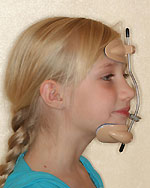
Facemask
This is a type of headgear that is used for growing patients with an underbite (Class III). It is worn at night to help encourage forward growth of the upper jaw and restrict forward growth of the lower jaw. Rubber bands connect to hooks on a Rapid Palatal Expander that is cemented to the upper teeth. Usually, the facemask is worn for six to 12 months.
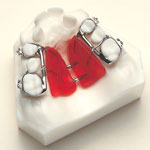
DMAX
This is a fixed (cemented) appliance used on the upper teeth to gain space and prevent future extractions. It is often used in conjunction with a lower MSX appliance. It is typically used in patients with moderate to severe crowding and narrow dental arches. Usually it will stay in the mouth for nine months and braces will be put on a few months after it is cemented.
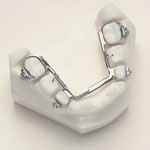
MSX
This is a fixed (cemented) appliance used on the lower teeth to gain space and prevent future extractions. It is often used in conjunction with an upper DMAX appliance. It is typically used in patients with moderate to severe crowding and narrow dental arches. Usually it will stay in the mouth for nine months and braces will be put on a few months after it is cemented.
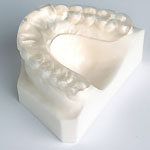
Splint
This is prescribed in patients with Temporomandibular Joint Disorders (TMD). It fits over the upper teeth, is made of hard acrylic, and must be worn at ALL times. The splint can only be effective with 100% compliance. If the upper and lower teeth are allowed to touch more than an hour or two per day, it will not work. The splint allows the muscles of the jaw to relax so that the jaw can reposition to its natural position. It is typically worn for six to nine months, during which time it must be adjusted periodically as the jaw repositions. After the splint therapy is complete, orthodontic treatment is often necessary.
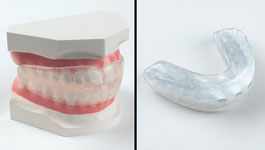
Tooth Positioner
This is usually prescribed when braces come off and there are still some slight improvements that can be made in the teeth. Also, patients with a tendency towards an open bite may be asked to wear a positioner. It is made of a rubbery material and is worn at night and for several hours during the day. During the day, the patient is required to squeeze the teeth together into the tooth positioner. The positioner is typically worn for three to six months, after which time traditional retainers will be made.
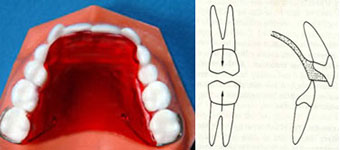
Bite Opening Retainer
This is often used at the beginning of braces treatment to correct a deep bite. It is a removable appliance, and is very similar to the retainer that is used when braces are completed. Patients with too much overlap between upper and lower front teeth are asked to wear this full time for two months. When the retainer is in place, the back teeth don’t touch, which causes them to grow toward each other, resulting in improvement of the deep bite. See also bite turbos.
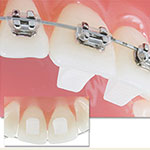
Bite Turbos
These are small attachments that are bonded to the inside of the upper front teeth on patients with a deep bite. They do the same job as the bite opening retainer, with the difference being that they cannot be removed by the patient. Because they are not removable, bite turbos will usually correct a deep bite faster than a bite opening retainer.
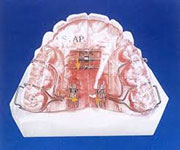
Schwarz/Sagittal Appliance
These are removable retainers that have adjustment screws in them. They are most often used in younger patients who still have some baby teeth and are not ready for braces yet. They will create more space for incoming permanent teeth and/or correct crossbites. They can be prescribed for the top, bottom, or both. The adjustment screws are usually turned once per week at home.
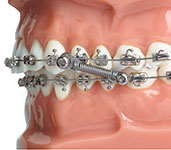
CS-2000
These springs are connected to the braces. They are most often used at the end of treatment as a substitute for rubber bands in patients who are not able to wear their rubber bands as directed. The springs cannot be removed by the patient.